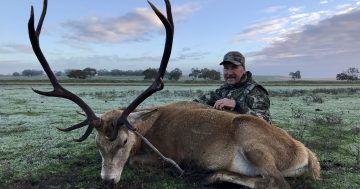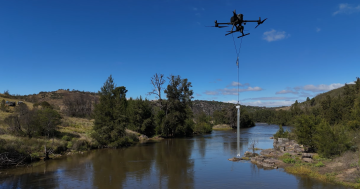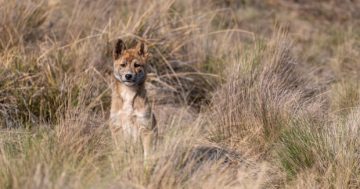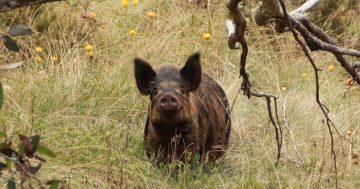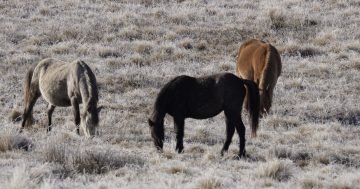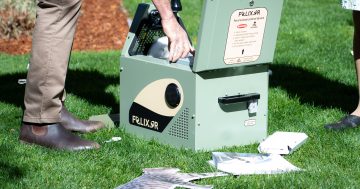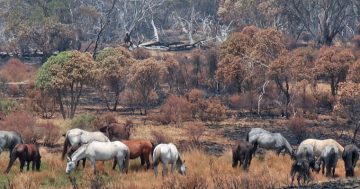
Sambar deer can be found throughout NSW and areas of the ACT. Photos: Rod Hart.
The Federal Government has revealed a new plan to get on top of “Australia’s next rabbit plague”. But the ACT might already be a step ahead of the game.
Designed in conjunction with state governments, and several agricultural and conservation groups, the draft National Feral Deer Action Plan 2022 to 2027 “aims to limit further spread of feral deer into new areas and reduce the impacts of large populations”.
Introduced in the 1800s for hunting and farming purposes, feral deer numbers grew to an estimated 50,000 in Australia by 1980, 200,000 by 2002 and now in 2022, likely one to two million.
According to the plan, landowners from rural and urban areas across south-east Australia compare the damage to that caused by rabbits.
“Feral deer are spreading into peri-urban areas, including Sydney, Melbourne, Canberra, Brisbane and Wollongong, where they impact people’s property and safety through vehicle collisions, damage to parks and gardens, impacts on revegetation plantings and can be aggressive to people and domestic animals,” one of the key findings reads.
The impact for motorists is ever-increasing.
“In some parts of the country you are now more likely to see a deer on the side of the road than a kangaroo,” Invasive Species Council CEO Andrew Cox says.
“A large deer can weigh in at more than 200 kilograms and can have devastating consequences for Australian families driving on major roads.”
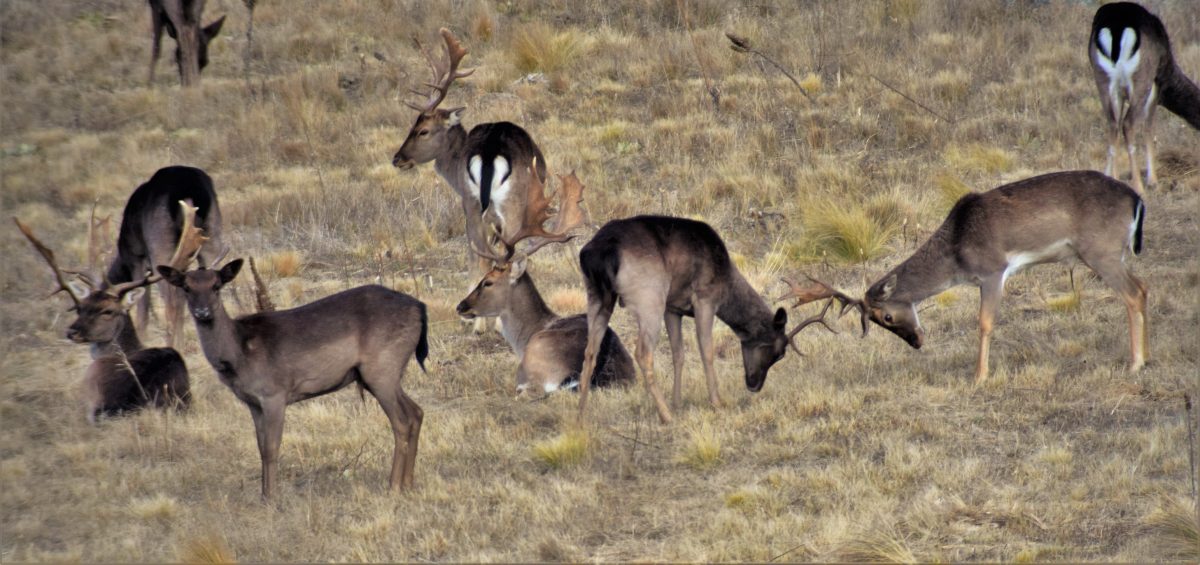
Fallow deer in the ACT. Photo: Zac McKenzie.
The “game-changing” plan calls for a mix of ramped-up control methods – increased shootings combined with other humane methods such as baits – and the establishment of a “national containment zone” to stop deer heading west.
“Implementing this national plan is our best shot at avoiding wall-to-wall deer across the continent,” Andrew says.
Assistant director of Urban Reserves and Senior Ranger Mark Sweaney coordinates all control programs on behalf of the ACT Government’s Environment Directorate, culling rabbits, pigs, horses and goats, plus overabundant native species such as kangaroos.
He says deer is “absolutely a problem in the ACT”.
“We’ve got deer populations pretty much on every side of the ACT. The bushfires over the 2019/2020 summer and the good seasons following really helped them spread.”
Rangers conducted their first aerial cull across the Namadgi National Park three years ago, which revealed the problem areas.
“In the ACT, we have two species,” Mark says. “The Sambar deer are the largest, introduced from southeast Asia, and generally found in Namadgi, and the other is the Fallow deer, a smaller European species found in the Lake George area, along the Murrumbidgee River corridor and near Googong.”
They’re not necessarily limited to the outskirts either.
“We had a Sambar deer turn up at Parliament House one year, and we get regular reports on Black Mountain and Mount Ainslie,” he says.
But no matter what species they are or where they are, the damage is the same.
“Namadgi still has some of the country’s best high-country bogs, which are really beautiful places.
“Hard-hoofed animals on these areas can destroy them quickly, and the wildlife that lives up there including corroboree frogs and broad-toothed rats.”
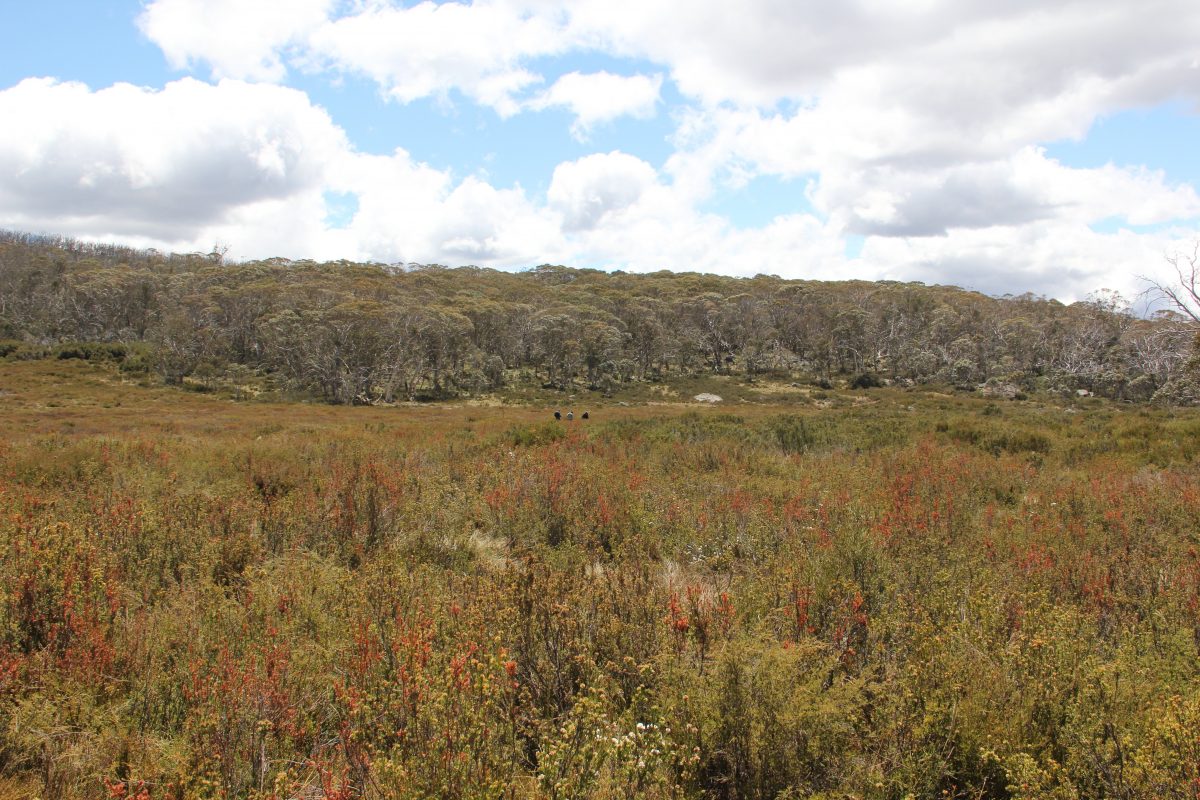
Bogland in Namadgi National Park – prime habitat for the endangered corroboree frog. Photo: Namadgi National Park.
This also has flow-on implications for the quality of Canberra’s water catchments and, in turn, our drinking water.
Fortunately, Mark says the feral deer numbers in the ACT tally to fewer than an estimated 300.
“They would be a really big issue, but we’ve been managing it for years and kept the numbers quite low, preventing the impact they’ve had elsewhere.”
Representatives from the ACT Government were invited to the working group to offer suggestions on the national plan. One of these included thermal-imaging technology to help spot deer.
“This is really effective at picking up low numbers and it’s something we’ve shared with the other states, along with our other methods,” Mark says.
This continued control over extermination remains the aim.
“We have reduced the population over the past three years with the aerial control programs and each year the cull count goes down. So we’ll continue to deliver these programs annually to contain the numbers.”
Public submissions to the draft National Feral Deer Action Plan 2022-2027 close 20 March, 2023.












